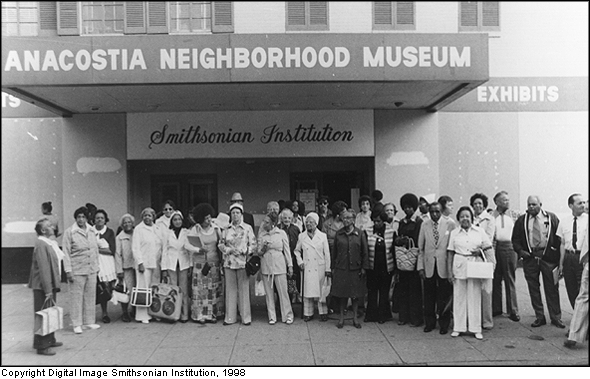Today in Smithsonian History: March 5, 1987

Anacostia Historical Society members pose in front of the Carver Theater, which served as the first home for the Anacostia Neighborhood Museum, now known as the Anacostia Community Museum. Louise Daniel Hutchinson, historian at the museum, is the seventh person from the left in the front row.
March 5, 1987 The Anacostia Neighborhood Museum is renamed the Anacostia Museum. The Torch attributes the change to the fact that the “museum serves a public beyond its immediate environment and has obtained a national and international reputation through the circulation of its traveling exhibitions and the distribution of its publications.”

The Anacostia Museum’s new building at 1901 Fort Place, S.E., Washington, D.C., which opened May 17, 1987 next to its laboratory-research center built in 1975. The new building is approximately 10 blocks from the Museum’s former location and was developed by the architectural firm of Keyes Condon Florance. In 1995 the Museum was renamed Anacostia Museum and Center for African American History and Culture. After the Smithsonian launched its new National Museum of African American History and Culture, the Museum was renamed Anacostia Community Museum in 2006
Courtesy Smithsonian Institution Archives
Posted: 5 March 2019
- Categories:








